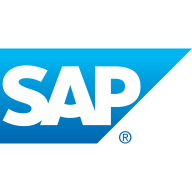


Find out what your peers are saying about SAP, Microsoft, Infor and others in ERP.
| Product | Market Share (%) |
|---|---|
| SAP ERP | 17.2% |
| Microsoft Dynamics 365 Business Central | 6.5% |
| Microsoft Dynamics SL | 0.5% |
| Other | 75.8% |



| Company Size | Count |
|---|---|
| Small Business | 39 |
| Midsize Enterprise | 12 |
| Large Enterprise | 19 |
| Company Size | Count |
|---|---|
| Small Business | 31 |
| Midsize Enterprise | 30 |
| Large Enterprise | 76 |
Microsoft Dynamics 365 Business Central is a cloud-based enterprise resource planning (ERP) solution developed by Microsoft. It is designed to help small and mid-sized organizations streamline and automate their financial, supply chain, and project management processes. Business Central offers a range of tools and features to support collaboration and communication and provides real-time visibility into business performance.
With Business Central, organizations can manage their financials, including general ledger, accounts payable, accounts receivable, and cash management. It also offers supply chain management capabilities, including inventory management, purchase order management, and sales order management. In addition, Business Central supports project management, including project tracking, project billing, and resource management.
Microsoft Dynamics 365 Business Central Features
Microsoft Dynamics 365 Business Central has many valuable key features. Some of the most useful ones include:
Microsoft Dynamics 365 Business Central Benefits
There are many benefits to implementing Microsoft Dynamics 365 Business Central. Some of the biggest advantages the solution offers include:
Reviews from Real Users
Microsoft Dynamics 365 Business Central is a solution that stands out when compared to many of its competitors. Some of its major advantages are that it is user-friendly, has good integrations, and is flexible.
Sasinath V., Project Consultant ( Scale Up) at a tech vendor, says, "For me, the main strengths of Microsoft Dynamics NAV are that it's user-friendly and light. These are its major wins. I have used other ERPs and their architecture was a little more complex when compared to the Microsoft Dynamics NAV architecture."
"The solution's integrations and interface are very good,” mentions Alonso R., Director de Servicios at Kc ERP group.
Another PeerSpot reviewer, Kamesh G., Vice President - Information Systems at a media company shares what he likes most about the solution: "I have found the flexibility to be very valuable. It's highly flexible, and at least for us, it has been effective. It is also highly functional."